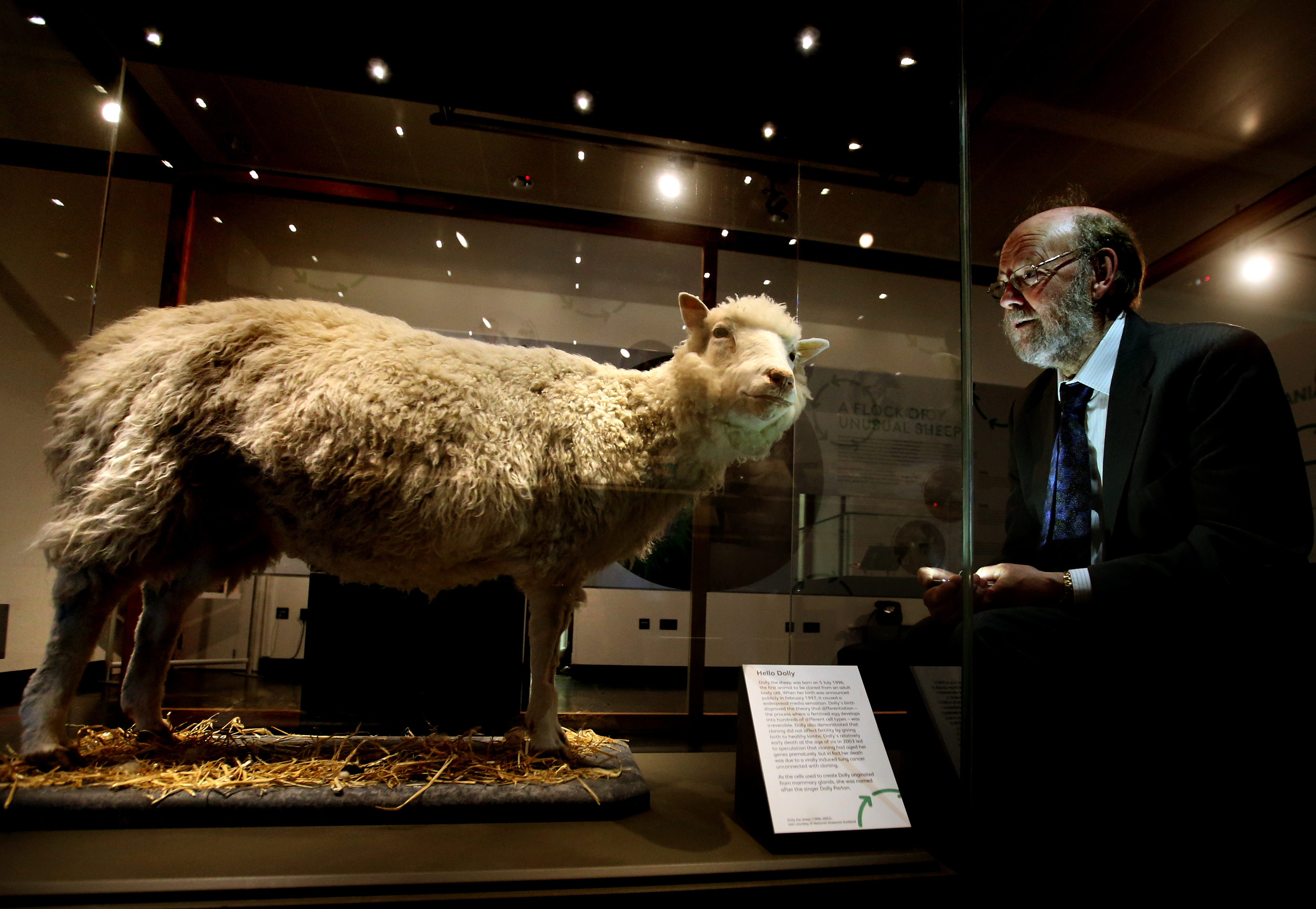
CLONING had been the stuff of science fiction until July 5, 1996.
On that day, Dolly the sheep was born at the Roslin Institute, becoming the first mammal successfully cloned using an adult cell.
She was the result of work by biologist Ian Wilmut at the government research facility near Edinburgh.
The cloning process
The cloning of Dolly took around 18 months from start to finish. There was a team of people involved, including scientists, embryologists, surgeons, vets and farm staff.
They used hundreds of sheep eggs in the course of the experiment.
The team took adult cells from a Finnish Dorset ewe, starved them of nutrients, and injected them into sheep eggs.
An electric current was then applied to the cells, causing them to form an embryo which was then implanted into a surrogate sheep.
Around 29 were eventually implanted into surrogate mothers and, from those, only Dolly was born.
Why a sheep?
The team at the Roslin were trying to make animals that would produce therapeutic proteins within their milk that could be used to treat diseases suffered by humans.
The team had a lot of experience working with sheep at the time, and the animals were cheaper than cows.
Dolly’s life
Importantly, Dolly had an almost identical genetic make-up to the ewe from which the adult cells had been taken.
Her existence was announced on February 22, 1997, when she was seven months old, sending the world’s media into frenzy as the debate about the possibility of human cloning intensified.
Helen Sang, Professor of Vertebrate Molecular Development at the institute, said: “I don’t think anyone imagined the scale of it or that we’d still be talking about it 20 years later.
“In the week following the announcement, there were 3000 phone calls from around the world.
“The news broke over a weekend and everyone was shocked to find the car park blocked with TV trucks when they arrived at work on the Monday.”
Dolly lived her whole life at the Roslin Institute and, apart from the occasional media appearance, led a normal life with the other sheep on the farm.
Over the years, she gave birth to a total of six lambs – Bonnie, Sally, Rosie, Lucy, Darcy and Cotton.
Wishing a very happy birthday to #Dolly the ? (born 5 July 1996, and the first mammal cloned from an adult somatic cell, here at the @roslininstitute) by sharing this #gif I made when I first saw the taxidermically preserved remains of #Dolly at @NtlMuseumsScot #fanboymoment pic.twitter.com/H8MUOSCG6X
— Siddharth Kankaria (@SiddhrthKnkaria) July 5, 2018
How long did she live?
Sadly, Dolly developed arthritis at the relatively young age of five.
She later caught a virus that causes lung cancer in sheep, and was put to sleep aged six when the tumour was affecting her quality of life.
Sheep can live to around 12 years, but scientists say there’s no reason to believe that her illness was anything to do with being a clone. It seems she was unlucky to get a common but untreatable virus.
Legacy
According to Professor Sang, Dolly “turned scientific thinking on its head and proved that it’s possible to turn back the clock of an adult cell so it behaves like a cell from a newly fertilised embryo”.
The pioneering sheep paved the way to develop techniques for producing stem cells from adult cells.
This has created opportunities to develop personalised stem cell therapies for diseases such as Parkinson’s and some types of blindness.
READ MORE:
In pics: Two monkey clones created using Dolly the sheep technique

Enjoy the convenience of having The Sunday Post delivered as a digital ePaper straight to your smartphone, tablet or computer.
Subscribe for only £5.49 a month and enjoy all the benefits of the printed paper as a digital replica.
Subscribe